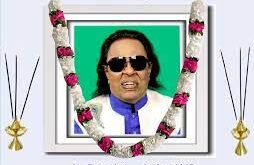
Feng Shui is a Chinese philosophical system of harmonizing everyone with the surrounding environment. It is closely linked to Daoism. The term feng shui literally translates as “wind-water” in English. This is a cultural shorthand taken from the passage of the now-lost Classic of Burial recorded in Guo Pu’s commentary: Feng shui is one of the Five Arts of Chinese Metaphysics, classified as physiognomy(observation of appearances through formulas and calculations). The feng shui practice discusses architecture in metaphoric terms of “invisible forces” that bind the universe, earth, and humanity together, known as qi.
Historically, feng shui was widely used to orient buildings—often spiritually significant structures such as tombs, but also dwellings and other structures—in an auspicious manner. Depending on the particular style of feng shui being used, an auspicious site could be determined by reference to local features such as bodies of water, stars, or a compass.
Feng shui was suppressed in mainland China during the state-imposed Cultural Revolution of the 1960s but has since then regained popularity.
Modern reactions to feng shui are mixed. The Skeptic Encyclopedia of Pseudoscience states that some principles of feng shui are “quite rational”, while noting that “folk remedies and superstitions… [have been] incorporated into feng shui’s eclectic mix”.
Early instruments and techniques
The history of feng shui covers 3,500+ years before the invention of the magnetic compass. It originated in Chinese astronomy . Some current techniques can be traced to Neolithic China, while others were added later (most notably the Han dynasty, the Tang, the Song, and theMing)
The astronomical history of feng shui is evident in the development of instruments and techniques. According to the Zhouli, the original feng shui instrument may have been a gnomon. Chinese used circumpolar stars to determine the north-south axis of settlements. This technique explains why Shang palaces at Xiaotun lie 10° east of due north. In some cases, as Paul Wheatley observed, they bisected the angle between the directions of the rising and setting sun to find north. This technique provided the more precise alignments of the Shang walls at Yanshi and Zhengzhou. Rituals for using a feng shui instrument required a diviner to examine current sky phenomena to set the device and adjust their position in relation to the device.
The oldest examples of instruments used for feng shui are liuren astrolabes, also known as shi. These consist of alacquered, two-sided board with astronomical sightlines. The earliest examples of liuren astrolabes have been unearthed from tombs that date between 278 BC and 209 BC. Along with divination for Da Liu Ren the boards were commonly used to chart the motion of Taiyi through the nine palaces. The markings on a liuren/shi and the first magnetic compasses are virtually identical.
The magnetic compass was invented for feng shui and has been in use since its invention. Traditional feng shui instrumentation consists of the Luopan or the earlier south-pointing spoon —though a conventional compass could suffice if one understood the differences. A feng shui ruler (a later invention) may also be employed.
[blog_post cat_slug=”feng-shui”] पौराणिक कथाओं, प्रेरक क्षण, मंदिरों, धर्मों, फिल्मों, हस्तियों के बारे में दिलचस्प जानकारी, हजारों गाने, भजन, आरती के बोल हैं Your wish may come true today…
पौराणिक कथाओं, प्रेरक क्षण, मंदिरों, धर्मों, फिल्मों, हस्तियों के बारे में दिलचस्प जानकारी, हजारों गाने, भजन, आरती के बोल हैं Your wish may come true today…



